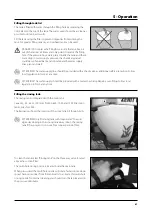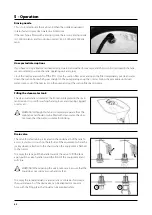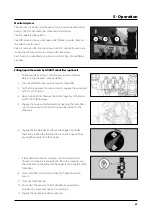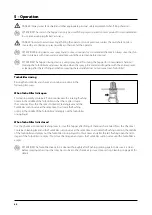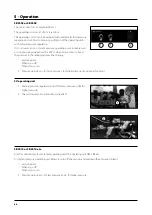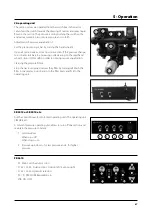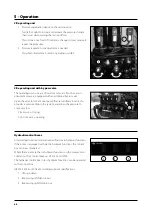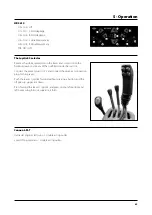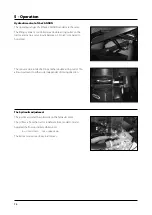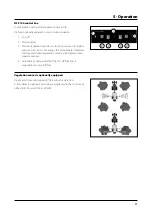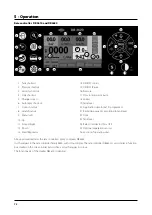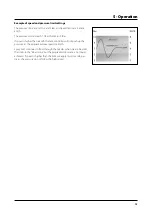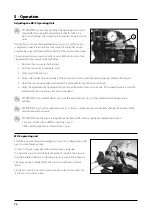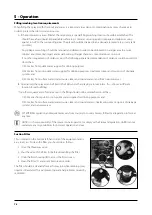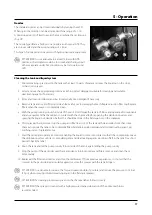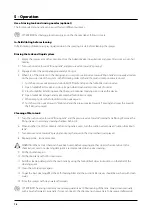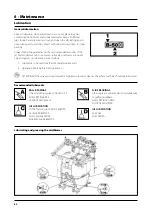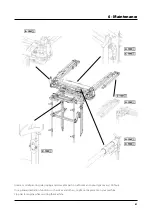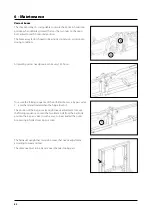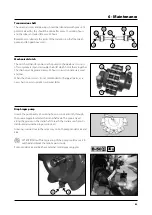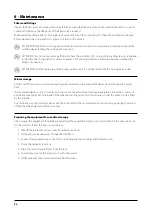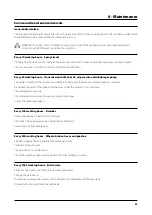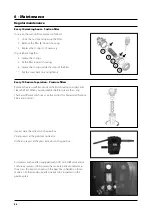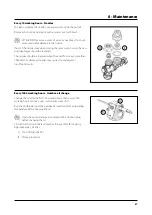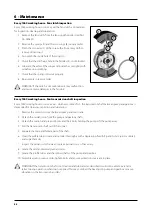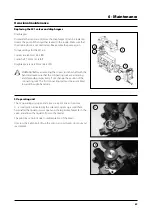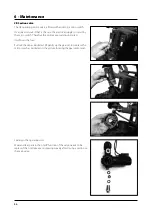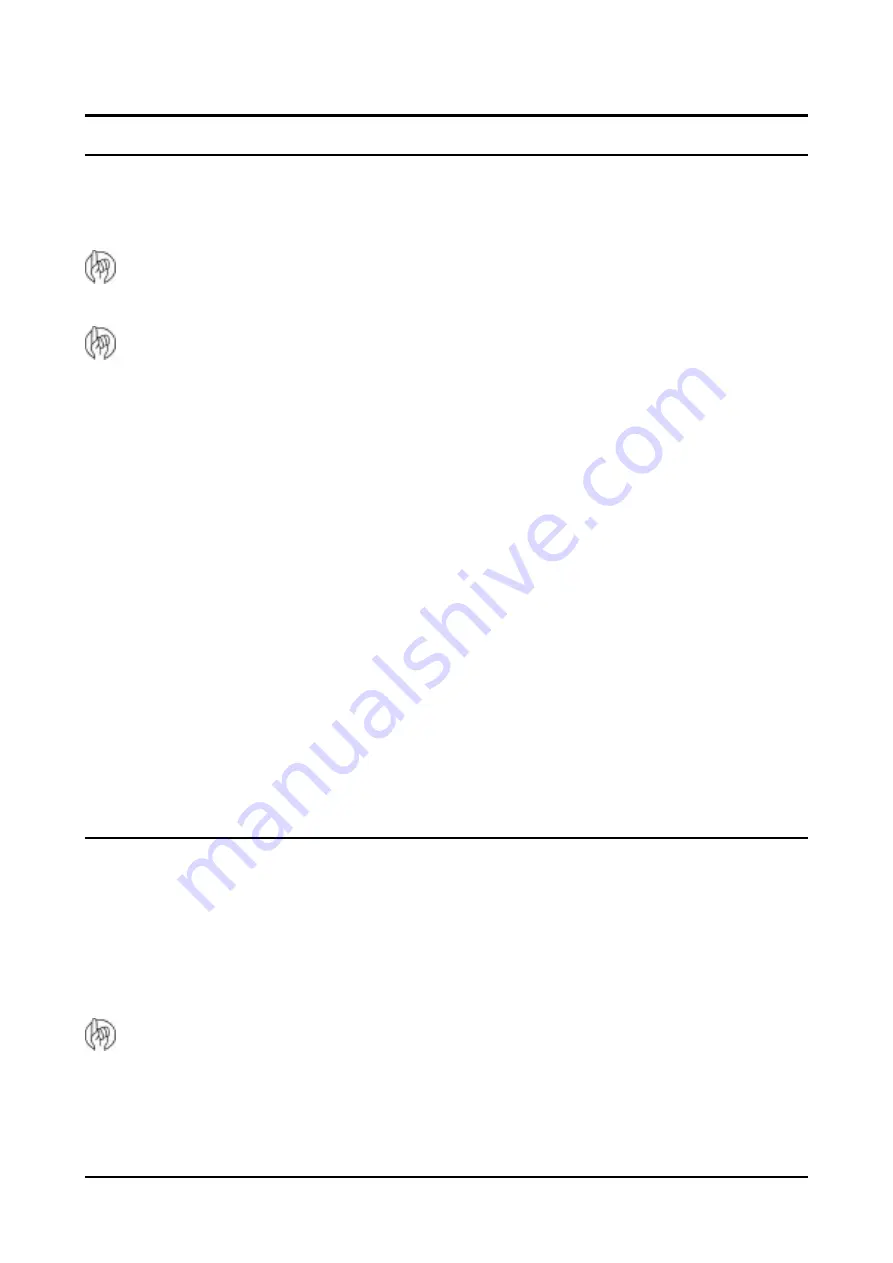
75
5 - Operation
Cleaning
General information
In order to be able to use your mistblower for many years, a maintenance programme needs to be followed. This
programme should include a comprehensive cleaning procedure.
ATTENTION! Always read the individual sections. Carefully read the maintenance task instructions before starting.
If any part of these instructions is unclear, for safety reasons, please contact your HARDI dealer for further
information.
ATTENTION! A clean mistblower is a safe mistblower.
A clean mistblower is always ready for action.
Clean mistblowers are not damaged by pesticides and their solvents.
Steps to follow
1. Fully read the chemical product’s label. Take note of any special instructions regarding protective clothing,
deactivating agents, etc. Read the labels on the detergents and deactivating agents. If any cleaning procedure is
specified, follow it accordingly.
2. Familiarise yourself with local legislation regarding the disposal of pesticides, mandatory decontamination
methods, etc. Contact the appropriate department, e.g. Department of Agriculture.
3. Pesticide washings can usually be emptied out on a soakaway or retained at a washing location (See “Filling/
washing location requirements”). This must be an area not used for crop growing. You must avoid seepage or
runoff of residue into watercourses, wells, springs, pools, etc. The fluid remaining after rinsing the equipment
cannot be disposed of down a sewer. It must be emptied into a suitable soakaway.
4. Cleaning starts with calibration. A properly calibrated mistblower ensures a minimal amount of fluid remaining.
5. It is good practice to clean the mistblower immediately after use, leaving it safe and ready for the next spray job.
This prolongs the life of the parts.
6. At times, the spray liquid may need to be left in the tank for a short time e.g. overnight or until weather is suitable
for spraying. Unauthorised persons or animals should not have access the mistblower under these circumstances.
7. If the product applied is corrosive, all metal parts of the machine before and after use should be coated with a
suitable rust inhibitor.
Cleaning and maintaining the filters
Clean filters ensure:
1. Mistblower parts, such as the valves, diaphragms and operating units, are not blocked or damaged during use.
2. Nozzles are not blocked during spraying.
3. The pump has a long service life. A clogged suction filter will result in pump cavitation. The main filter that
protects the mistblower parts is the suction filter. Check it regularly.
ATTENTION! It is strongly recommended to pump antifreeze liquid, Glycol “through the entire circuit, move all
manifolds valves; let the pressure safety valve pop..
No matter if the machine is in a warm clime, it simply conserves all synthetic part in the circuit.
Summary of Contents for ZENIT 400
Page 2: ......
Page 4: ......
Page 10: ...6...
Page 117: ......
Page 118: ...ILEMO HARDI S A U Poligono Industrial El Segre 712 713 25080 Lleida SPAIN...

